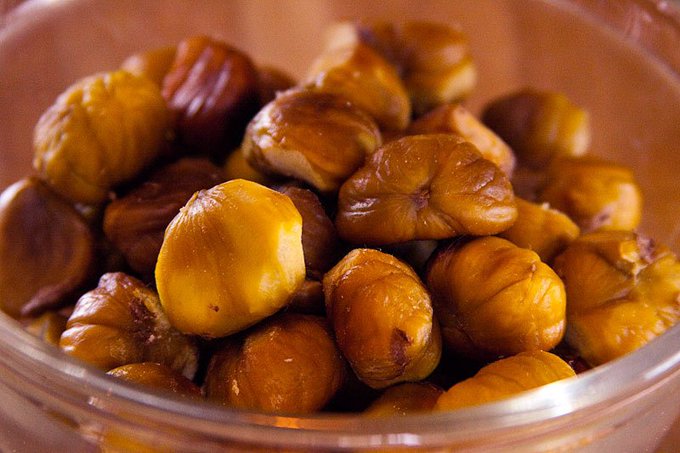 Meredith Digital Staff
Meredith Digital Staff
But the elements that bring beauty to the beach also make it one of the most challenging environments when it comes to eating: think melting yogurt, sand-coated sandwiches and drooping chocolate chip cookies.
Staying nourished and hydrated is key at the beach, as lots of sun and swim can drain you of energy. What you need is a list of beach-friendly foods to pack alongside your towels and sunscreen. Just don’t forget to bring sanitizing hand wipes and a cooler with ice packs (or frozen water bottles), as perishable foods spoil quickly in the heat.
“Perishable foods should not be out for more than one hour when it’s hot out, and that includes the time traveling to the beach if the food is unrefrigerated in your vehicle’s trunk,” said Isabel Maples, a registered dietitian nutritionist and spokeswoman for the Academy of Nutrition and Dietetics.
If it’s possible, consider taking along two coolers. “Pack one cooler for drinks and another one for food, to keep both cooler contents colder,” Maples said. And keep the cooler cool by placing it in the shade or covering it with a beach blanket or towel.
Watermelon and feta salad

Watermelon & Feta Cheese Salad
“Not only is watermelon incredibly refreshing, it packs a powerful electrolyte punch, which helps replace what you sweat out,” said Marge Perry, a food and nutrition writer and author of the upcoming cookbook “Hero Dinners: Complete One-Pan Meals That Save the Day.”
Adding chunks of feta cheese can help replace lost sodium while boosting protein and flavor, according to Perry. To make your watermelon-feta salad beach-friendly, pack it in reusable plastic containers with toothpicks secured in the top few pieces.
Fruit or veggie kebabs

Fruit or veggie kebabs
“Kebabs are easy to eat, even with sandy little — or big — hands,” Perry said. Make easy-to-eat, nutritious and satisfying kebabs by threading a few pieces of mild cheese, such as mozzarella, between your favorite fruits or veggies, she explained.
Watermelon, grapes, pineapple, cantaloupe, bell peppers, cherry tomatoes, fennel or cucumber work well. To pack kebabs, Perry recommends sliding the skewers into a plastic zip-top bag, with the handle end facing up, for an easy grab-and-go snack; then roll the closed bag into a tube, wrap paper towels or napkins around the tube, and secure it with a rubber band to keep the napkins handy.
Hummus with veggies

Hummus and veggies
If you’re at the beach for hours at a time, you’ll want substantial snacks. “Loaded with protein, hummus can satisfy,” Maples said. Pair hummus with water-rich veggies like baby carrots, celery sticks or sugar snap peas. When you’re done snacking, don’t forget to store leftover hummus in a cooler. “You might also try individual-sized hummus containers so that a sandstorm doesn’t ruin a big container of hummus,” Maples added.
Whole-grain cracker sandwiches

Whole-grain cracker sandwiches
“I love Triscuits or any hearty whole-grain cracker sandwiched with almond butter and fresh raspberries, or with banana and cacao nibs,” said Abby Langer, a registered dietitian and owner of Abby Langer Nutrition in Toronto.
The crackers offer fiber, so they satisfy a grumbling stomach easily. They’re also salty, “which tastes good after I’ve been sweating for a while on one of my epic beach walks that lasts for hours,” Langer said.
Nutty trail mix

Nutty trail mix
A satisfying trail mix provides heart-healthy fats and protein that can help prevent hunger pangs at the beach. “The key is to have a mix of textures and nutrients,” Perry said.
Her favorite combo includes roasted almonds and pepitas for protein-packed crunch; crisp, salty broken pretzels; sweet roasted coconut chips; sweet and nutrient-dense dried fruit, like cranberries, raisins or dried cherries; and cereal or popcorn to add bulk with fewer calories.
Pack in portion-controlled plastic bags to avoid overindulging.
Grain-based salad

Grain-based salad
“For a beach-friendly meal, I love making grain-based salads with farro or quinoa, a variety of roasted or raw seasonal vegetables, chopped nuts, fresh herbs and a light vinaigrette dressing,” said Jessica Levinson, culinary nutrition expert and author of the forthcoming “52-Week Meal Planner.” Pack the salads in resealable containers and store in cooler bags. Since you only need a fork, “there’s no need to worry about sandy hands touching the food.”
Oranges

Oranges
“My mom has always brought oranges to the beach, and now I do the same for me and my kids,” Langer said. Oranges are hydrating and thirst-quenching. Plus, they contain vitamin C, which has been shown to limit the damage induced by ultraviolet radiation from the sun.
Peanut butter and jelly sandwich

Peanut butter and jelly sandwich
“A peanut butter and jelly sandwich can be a great choice when you don’t want to pack a cooler of food, since it doesn’t need to be refrigerated,” Maples said.
Choose whole-wheat bread for extra fiber and nutrients. If you’re out of bread, Maples recommends taking along whole-grain crackers to dip into individual containers of peanut butter.
Beverages

Fruit smoothies
Lastly, don’t forget to pack beverages. Besides water, try 100% juices or flavored waters. These drinks may feel more indulgent, so you may be more likely drink enough to stay hydrated, according to Maples.
It’s also wise to limit your alcohol intake. “Alcohol can dehydrate you, and in the hot sun, that can happen even faster,” Langer said. If an alcohol-free beach trip is not realistic, “be sure to drink water between beers to stay hydrated,” Maples said.
The-CNN-Wire
™ & © 2018 Cable News Network, Inc., a Time Warner Company. All rights reserved. Posted: Jul 08, 2018 8:30 PM EDTU pdated: Jul 08, 2018 8:30 PM EDT
http://www.wsmv.com/story/38596525/best-beach-foods-and-snacks

 By
By 







